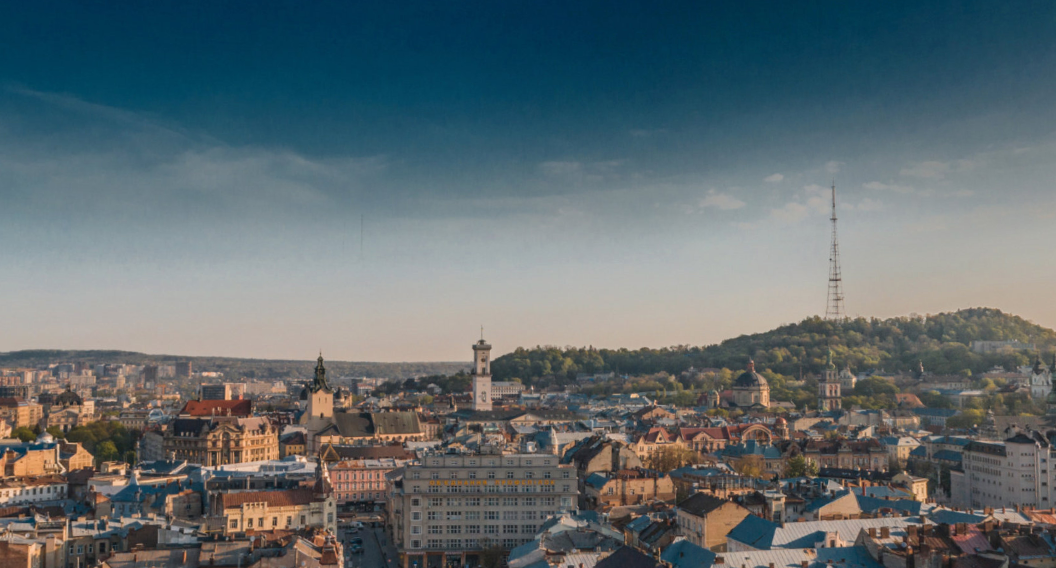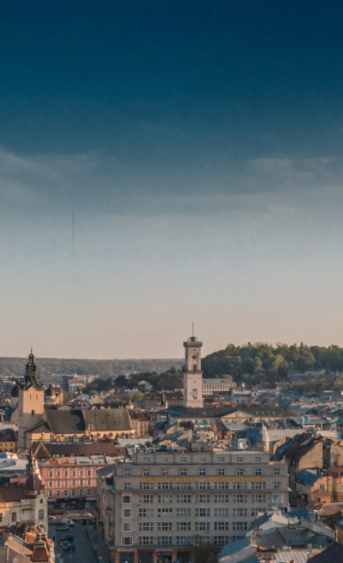We know Lviv as a charming, romantic, mysterious and respectable city with many curiosities and mysterious nooks. But how was this cultural palimpsest of the city formed over the centuries? How was Lviv look like at the beginning of its existence? How did the harsh medieval city turn into the elegant Austrian center of Galicia, how was it changed by the Soviet period, and what are the oldest historical buildings that have survived to modern times? Let's follow how the panorama of Lviv changed in different times.
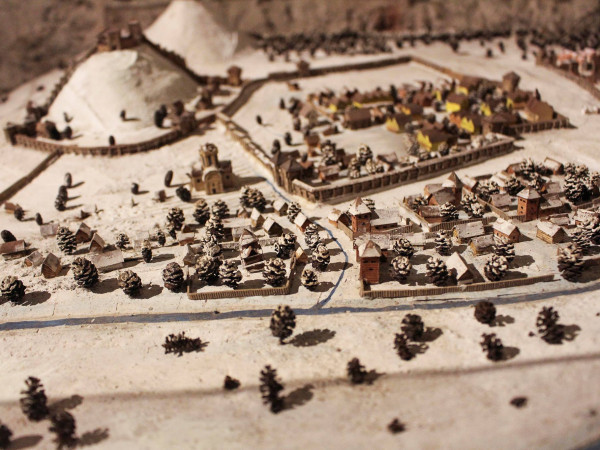
Princely Lviv
Lviv was built in the 13th century, as the capital of the Galicia-Volyn principality. The first written mention of the city in 1256 refers to a fire in the city of Kholm, which was visible from as far as Lviv. And how did Lviv itself look from afar?
The High Castle - a wooden and earthen fortification built by Danylo Halytskyi, could be seen up on the hill called Zamkova Gora.
The city layed down in the valley next to Poltva. Its central building was the so-called Low Castle, and the central square was located on the site of the modern Old Market Square.
It was the main shopping area of the city, around which shopping rows were located and through which the merchant route ran. The city was surrounded by a defensive rampart. All the buildings were wooden, and the buildings were very close to each other. About a dozen Orthodox wooden churches could be seen among the residential and administrative buildings. Some of them have survived to this day in a very altered form, in particular the church of St. Nicholas, which is currently considered the oldest among Lviv churches.
The reconstruction of the panorama of Lviv of those times can be seen in the underground of the Jesuits Church.
Read more: Short history of Lviv
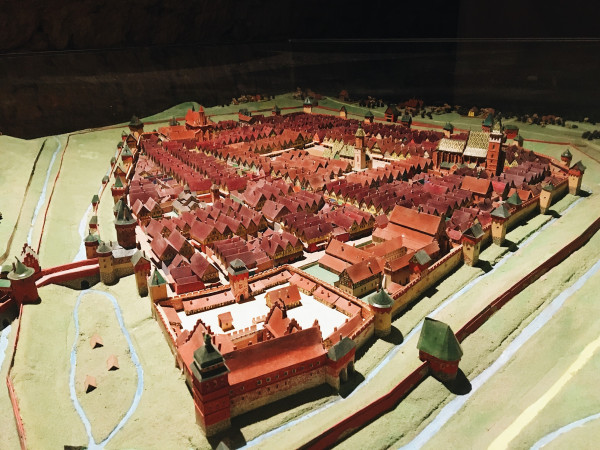
Lviv at the time of self-governmentThe city changed its appearance significantly after it received Magdeburg law in 1356 and the Polish king Casimir III came to power. The new ruler ordered to dismantle the old wooden fortification on Zamkovy Gora and built a stone castle. The city also began to develop around a new center - the modern Market Square, where the first wooden town hall was built for administrative needs. Such reconstruction displaced the Ruthenian population from the city, after this proces it was mainly inhabited by Poles and Germans. Spires of Gothic Catholic churches began to appear on the view of the city. The city was surrounded by two rows of stone defensive walls - the High and Low walls.
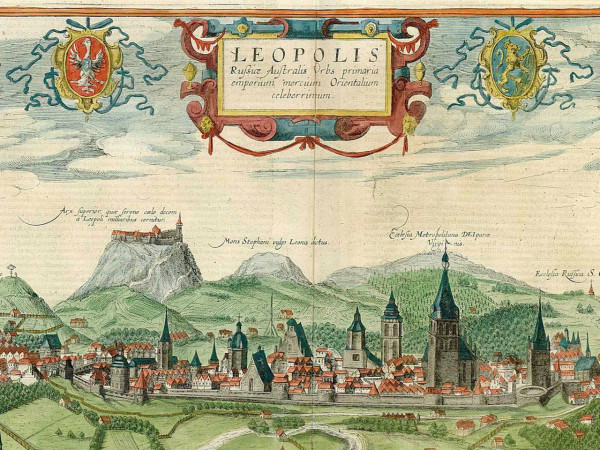
Lviv under the Polish kings
In 1527, the city was badly damaged by a fire, after which Lviv had to be rebuilt. Almost all Gothic architecture burned down, and the reconstruction opened a new stage of Lviv architecture - the Renaissance. Italian architects started coming to Lviv, and their works significantly updated the look of the city. In particular, the complex of the modern Rynok Square, known to us, was almost completely formed at this time. The Black Tenement and Palazzo Bandinelli were erected, already rebuilt octagonal stone city tower with a dial and sculptural decoration stood in the middle of the square. Also the Kornyakta tower - the bell tower of the Assumption Church and the Bernandine Church appeared on the panorama of the city. The buildings of the city arsenal and powder tower were restored after the fire.
Later, famous baroque churches began to appear: the Dominican Cathedral was built next to the market square, and in the western part of the city, behind the ramparts and Poltva, the St. George Cathedral was erected on Svyatoyurska Gora.
How the rebuilt Lviv began to look like after the fire can be seen in the engraving by Hohenberg - the first known image of the city.
And a large-scale reconstruction of the city as of 1740 can be found in the already mentioned underground of the Garrison Temple.
Read more: The Legendary founding of Lviv
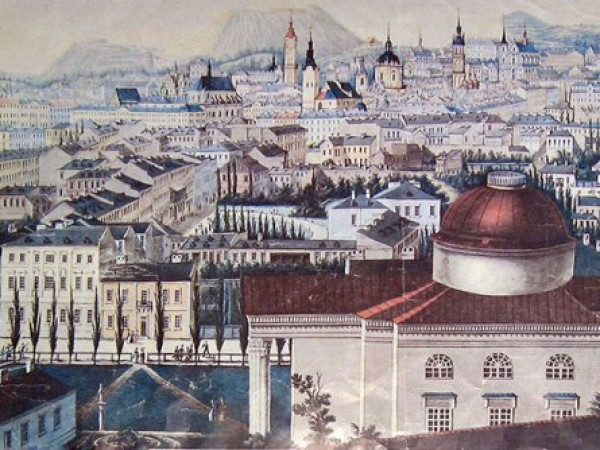
Lviv during the times of Austria-Hungary
Lviv became part of the Habsburg Empire in 1772. The Austrian rule affected the appearance of the city - it became neater, more refined, its territory increased, new streets and districts appeared.
Defensive walls was dismantled - by that time they had lost their defensive significance and were hindering the development of the city. The area of Lviv grew. In place of the fortification walls, the Governor's and Hetman's ramparts are standing - a place for city walks. The Lviv city hall is once again changing its appearance. In 1826, due to the re-planning of the premises at its foot, the old octagonal structure fell, breaking in half. A new town hall was built in its place, which has survived to this day. The recognizable spiers of the Neo-Gothic church of St. Elizabeth appeared on the silhouette of the city. The construction of secular architecture was gaining more scope. Magnificent cultural, administrative, utilitarian and residential buildings was being built, not just temples. It was at this time that the Opera House, the Potocki Palace, the University and the new building of the Lviv Railway Station began to decorate the city landscape. Also, under Austrian rule, Lviv lost the Poltva river. Due to pollution and improper condition, it is driven into underground channels.
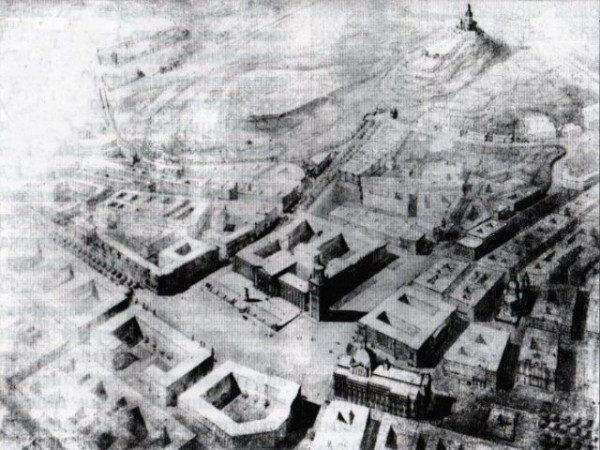
Lviv under Soviet occupation
As a result of the Second World War, Lviv became part of the Ukrainian SSR. The Soviet authorities had ambitious plans for the redevelopment of the city, but only a part of them was implemented. In particular, the central square of the city was planned to be moved to the territory of the modern Krakow market. The square was supposed to be very large-scale - larger in area than Red Square in Moscow, in the center of which it was planned to install a giant monument to Stalin. The project was never implemented.
New districts for residential development were added to Lviv. For instance, the village of Sikhiv - an integral part of modern Lviv, as well as Kozelnyky, Bondarivka, Sknylivok, etc., was incorporated into city territory. Multi-story residential buildings are growing rapidly. The station damaged by the bombings was restored and the airport was built. Many industrial buildings appear in the city, the pipes of plants and factories are added to the urban architectural ensemble. Among the most iconic are the confectionery factory "Svitoch" (in 1962 - "Red Rose"), Armored Tank and Bus Factories, "Polyaron" and "Electron". In the Soviet era, one of the most significant elements and a kind of landmark was added to the panorama of the city - the Lviv TV Tower, visible from all city districts.

Lviv in the era of independence
Today, the Ukrainian flag flies over the Lviv City Hall. And the observation deck of the City Hall is now open to visitors, so we can go up there and look at the panorama of the city from the highest building. So many roofs of houses of all these different eras fit into intertwined pattern. And what are completely new among them? The city is becoming modern - many new residential complexes and shopping centers appear - all of them can be seen from above. A square and a monument to Sheptytsky was erected on the re-planned square in front of St. George's Cathedral. It will get dark a little more and the illumination on the newly created memorial of the Heavenly Hundred will be turned on. You can't see it from here, but the Sheptytskyi Center - a modern resource and information center - has appeared next to Stryi Park, and the new airport terminal and the huge Arena Lviv stadium have been built right on the edge of the city.
The dynamics of changes in the Lviv panorama can be seen on the 3D model of the city in the Center for Architecture, Design and Urbanism "Powder Tower".
